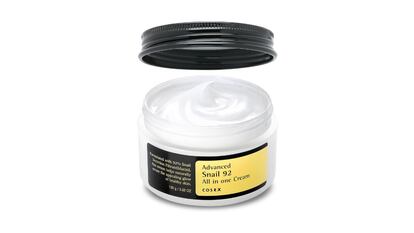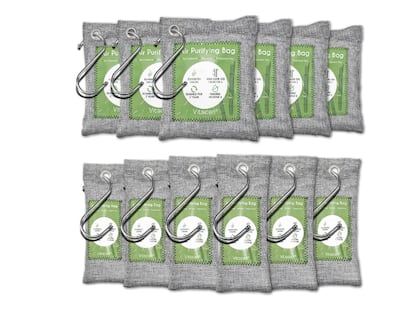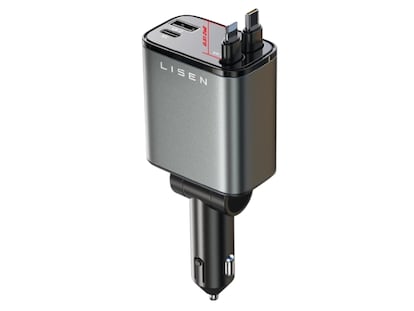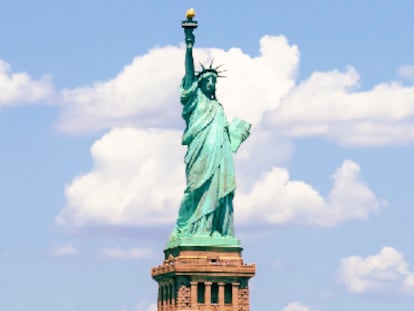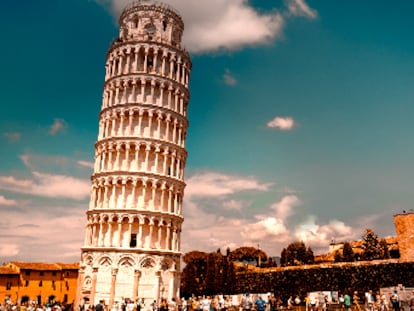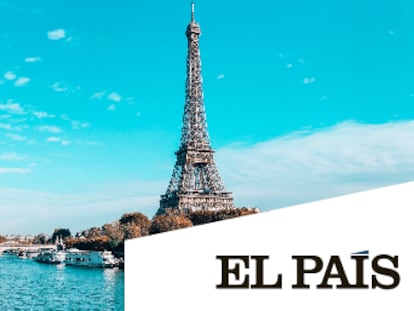Cable sobre la empresa belga Malta Forrest Company
| ID: | 115016 |
| Date: | 2007-07-11 11:13:00 |
| Origin: | 07KINSHASA797 |
| Source: | Embassy Kinshasa |
| Classification: | SECRET |
| Dunno: | 07KINSHASA796 |
| Destination: | VZCZCXRO9134 RR RUEHMR RUEHRN DE RUEHKI #0797/01 1921113 ZNY SSSSS ZZH R 111113Z JUL 07 FM AMEMBASSY KINSHASA TO RUEHC/SECSTATE WASHDC 6498 INFO RUEHXR/RWANDA COLLECTIVE RUCNSAD/SOUTHERN AF DEVELOPMENT COMMUNITY RUEHHE/AMEMBASSY HELSINKI 0020 RUEHVI/AMEMBASSY VIENNA 0033 RUEHUNV/USMISSION UNVIE VIENNA 0015 RUEAIIA/CIA WASHDC RHEBAAA/DEPT OF ENERGY WASHDC RUEAWJA/DEPT OF JUSTICE WASHDC RHEFDIA/DIA WASHDC RUFOADA/JAC MOLESWORTH RAF MOLESWORTH UK |
S E C R E T SECTION 01 OF 04 KINSHASA 000797 SIPDIS SIPDIS E.O. 12958: DECL: 07/09/2017 TAGS: ENRG, ETRD, KNNP, PGOV, PINR, PINS, IAEA, EMIN SUBJECT: RECENT ALLEGATIONS OF URANIUM TRAFFICKING IN THE DEMOCRATIC REPUBLIC OF CONGO REF: KINSHASA 00796 Classified By: DPOPOVICH, ECONOFF, Reason 1.4 (b), (c), (f) ------- Summary ------- 1. (S) Several sources have recently stated that the Malta Forest Company is mining and exporting uranium from the Democratic Republic of Congo (DRC). According to reports, Malta Forest does this by mining the uranified rock while mining copper and cobalt, then exporting the uranified ore and circumventing radiation testing by using an established system of corrupt government officials. Foreign companies then purchase the uranified ore and refine it abroad to separate the uranium, copper and cobalt. In this way, foreign companies purchase uranium from Malta Forest, while Malta Forest appears to be exporting copper and cobalt. In 2006, for example, a Finish company reportedly told the International Atomic Energy Commission (IAEA) that they imported one ton of uranium from the DRC. The DRC, however, claimed that it did not export any uranium in 2006. ---------------------------- Radioactive Mines in Katanga ---------------------------- 2. (S) All of Katanga Province could be said to be somewhat radioactive. Some areas are more radioactive than others, however, and there have been recent reports that several Katangan mines have abnormally high levels of radiation. Per REF, between 23 and 29 May, the Democratic Republic of Congo (DRC) Ministry of Mines and Property for Katanga Province sent a nine person commission to investigate allegations of abnormally high radiation levels at the Luiswishi Mine, located approximately 20km north-west of Lubumbashi, DRC. The commission examined the mine site and surrounding mineral deposits with radiometers, and sent 100kg of rock samples to the Nuclear Research Center of Kinshasa (CREN-K) for further analysis. The commission concluded that dangerously high levels of radiation existed at Luiswishi mine, and that the mine operator, the Mining Company of South Katanga (CMSK), which is predominantly owned by the Malta Forest Company (EGMF), was suppressing this fact to continue mining operations. 3. (S) In early June, a named OCC agent told an Embassy contact that he worked as an OCC overseer at the Luiswishi mine for two years. During this time, Kilolo claims that he and several unidentified colleagues notified Malta Forest of the high radiation levels at the mine. Fnu Nkongolo wa Dila, the Director of Malta Forest, reportedly paid him to keep quiet. Kilolo said that Nkongolo paid him and his colleagues several times after this as well. 4. (S) A named government official recently told an embassy contact that a Katangan government delegation went to Likasi, DRC in 2005 to investigate radiation levels at the Kisompe Mine. The delegation reportedly detected high levels of radiation at the mine, and found artisanal diggers, who were employed by Chinese and Korean businessmen, working the site. The delegation also inspected the Copinath company in Likasi, and reportedly discovered that Copinath had 15 tons of highly radioactive rock that it had obtained from artisanal diggers at the Shinkolobwe Uranium Mine (Shinkolobwe is now closed). The delegation submitted a report suggesting that the rock be returned to Shinkolobwe, but Samba Kaputo, the former and still de facto Special Security Advisor to DRC President Joseph Kabila, reportedly intervened and allowed the rock to be exported. Kaputo was reportedly a shareholder of Copinath. ---------------------- Associated Allegations ---------------------- 5. (S) On 7 June, Econoff had lunch with Professor Fortunat Lumu Badimbayi-Matu, the recently dismissed Director of CREN-K and the DRC,s Atomic Energy Commission (CGEA). During lunch, Lumu said that in late 2006, the CGEA sent a team, which Lumu lead, to Luiswishi to investigate radiation KINSHASA 00000797 002 OF 004 levels at the mine. Using Geiger counters, the team also found that the radiation levels were high. Lumu stated that Malta Forest was mining and exporting uranium, and doing so by claiming it was copper. At the very least, Lumu said that Malta Forest was selling copper at elevated prices, and foreign buyers were then separating the uranium from the raw ore. 6. (S) Lumu was fired shortly after this CGEA investigation by the new Minister of Scientific Research, Sylvanus Mushi Bonane. Minister Mushi fired him, in part, because he believed Lumu had struck personally beneficial deals with the Brinkley Mining company. Lumu told Econoff that this was not true, and that he negotiated uranium mining rights with Brinkley on behalf of the DRC government. He felt he was authorized to negotiate mining rights for the DRC with a private foreign company to mine uranium. He stated that he was trying to grant Brinkley uranium mining rights in order to inject legitimacy and transparency into the uranium mining process. He admitted, however, that part of the reason Brinkley was going to be given the rights was because of his and the CGEA,s damning report of Malta Forest, and that under the Brinkley deal, a private company would be established to inspect and certify Brinkley,s uranium shipments. Lumu was going to be the president of this inspection company, and profit from it. He did not think that this was a conflict of interest. In fact, he asked Econoff what the USG could do to help him, and if the USG could relocate him and his family to the United States because he was now afraid for his life. He acknowledged, however, that no DRC officials, including Mushi, had made a specific threat against him. 7. (S) On 13 June, Econoff had lunch with Lumu,s replacement, Professor Francois Lubala Toto. Lubala does not support Lumu, but corroborated Lumu,s allegations. He stated that the CGEA did send a team to investigate radiation levels at Luiswishi, and that Malta Forest is mining, exporting and selling uranium. 8. (S) On 2 June, the Embassy received a copy of a grievance that 20 artisanal miners submitted to Katanga Governor Kutumbi and the Minister of the Interior. In the grievance, the miners claim that that on 27 March 2007, local government authorities in Likasi, working for the Mayor of Likasi, Helene Yav Nguz, asked the miners to clandestinely mine 200, 60kg sacs of raw rock from Shinkolobwe. Mayor Yav, who had partnered with local Chinese businessmen, allegedly promised to pay the miners $20,000 for this work. The miners claimed that they mined the rock, but never received payment. They claimed that the rock was taken to the Kimpese Depot near Shinkolobwe, and that during the night of 3 April, it was loaded onto a red Scania truck and taken from Likasi. The truck was owned by a Somalian, and had license plate ACH-7893. The 20 miners signed the letter. (Comment: Econoff finds such claims not credible, especially since he personally inspected the Shinkolobwe Uranium mine in August 2006 and found that it was abandoned, and that no evidence of industrial or artisanal mining existed. This allegation by the 20 miners is noted for the record, however, since we recently received another report from a separate miner in Likasi alledging that Mayor Yav is working with unidentified Koreans on mining deals. End Comment.) ------- Finland ------- 9. (S) On 5 July, Professor Lumu told Econoff that an unidentified Finnish company reported to the IAEA, in accordance with the regulations of the IAEA,s additional protocol for the DRC, that the company imported one ton of uranium from the DRC in 2006. The DRC, however, did not report exporting any uranium in 2006. Professor Lumu said that IAEA representatives told him this in confidence during a conference in Vienna. Econoff contacted the IAEA to confirm this, but the IAEA would not comment. 10. (S) According to confidential OCC statistics, only two Finnish companies (note: which may actually be the same company) bought and imported "copper and cobalt concentrates" from DRC companies in Katanga Province in 2005 and 2006. KINSHASA 00000797 003 OF 004 These were Opolo Chemicals (who has a metal processing center in Namibia) (Box 286, 1247, City Road, Johannesburg) and Konkola Chemicals, variant Kokkola Chemicals (Box 286 Fin 1247, City Deep Road, Johannesburg). According to the OCC,s confidential 2005 statistics for Katanga (which may be SIPDIS underreported as many companies bribe border officials to avoid paying taxes), the following companies exported the following minerals to unidentified buyers in Finland in 2005: Company - Product - Kgs - Destination ------------------------------------- CMSK - Copper/Cobalt Concentrates - 57,705,275 - Finland GTL - White Alloy - 8,033,434 - Finland Bazano - Copper Concentrates - 582,336 - Finland C - Copper/Cobalt Concentrates - 2,895 - Finland 11. (S) The OCC states that DRC companies in Katanga exported a total of 255,650,678 kg of minerals in 2005. Exports to Finland (66,323,940) thus accounted for 26% of all exports. Of interest, the declared value of GTL,s &white alloy8 exports was considerably higher than that of the copper / cobalt concentrate. As noted, CMSK works the Luiswishi mine, which the Ministry of Mines recently found to contain high levels of radiation. GTL, the Slag Treatment Group of Luiswishi (Groupement de Traitement de Terril de Luiswishi; 4 Route Munuma, Kipushi), also appears to exploit Luiswishi. Both Bazano and &C8 were miscellaneous one-time entries in the OCC records for the year. Since the OCC only reported one Finish importer in 2005, it is reasonable to conclude that nearly all DRC mineral exports to Finland in 2005 went to the Konkola company in Finland, and came from the CMSK and GTL companies working the Luiswishi mine. If Lumu,s report about a Finnish company reporting one ton of uranium imports to the IAEA is true, then it is also reasonable to conclude that Konkola reported this, and the uranium came from the Luiswishi Mine. This assumption would be corroborated by the REF report of high radiation levels at Luiswishi. ----------- Conclusions ----------- 12. (S) It is unclear whether or not Malta Forest and other companies in Katanga Province mine and traffic uranium. A body of circumstantial evidence exists, but specific hard evidence does not. Certainly, there are extensive, probably profitable quantities of uranium in Malta Forest,s mines, especially since the price of uranium (U308) has increased from approximately $15 a pound in 2004 to $135 a pound in 2007. It would be difficult to avoid mining this uranium while mining copper, and it would be easy to export it within raw, semi-processed rock as copper, especially if an illegal export system in an unregulated environment already existed to do so. The fact that the Embassy has received several reports in the past two months from approximately six different sources that Malta Forest is trafficking uranium, lends support to the circumstantial case against them (Post can not confirm if any of this reporting is circular). The fact that Finland may claim DRC uranium imports, but the DRC does not record any uranium exports, is also suspicious. 13. (S) On the other hand, Malta Forest is an easy target; it is a large company that has been working in the Congo since 1915, and it has been involved in business deals with various Congolese Government officials. Statistics are also intentionally muddied and manipulated by DRC officials to push various economic and political agendas. Around 20 June, for example, Governor Katumbi called Econoff to discuss the REF Ministry of Mine,s report. He argued that Malta Forest was trafficking uranium, and tried to get the United States to intervene. Governor Katumbi was reportedly a shareholder in several mining companies that compete with Malta Forest, including the Mining Company of Katanga (MCK) and Anvil Mining, although he told Econoff he divested himself of ownership in these companies. Professor Lumu,s side-story is also a case in point. What at first glance seems like a clear-cut case of uranium mining at Luiswishi quickly loses credibility by the revelation that Lumu planned to use the investigation to push Malta Forest aside and form a personally profitable partnership with Brinkley. Certain DRC officials may have a powerful economic incentive to say that private companies like Malta Forest are exporting uranium, KINSHASA 00000797 004 OF 004 whether this is true or not, because this often benefits their own business interests, and it is standard practice for officials to receive bribes from companies to make the problems the officials created in the first place go away. The only solution to conclusively determine whether or not companies are clandestinely trafficking uranium may be to conduct an independent study by a neutral party, such as the IAEA. MEECE |
Traducci¨®n autom¨¢tica. Puede que el texto traducido no sea fiel al original
Tu suscripci¨®n se est¨¢ usando en otro dispositivo
?Quieres a?adir otro usuario a tu suscripci¨®n?
Si contin¨²as leyendo en este dispositivo, no se podr¨¢ leer en el otro.
FlechaTu suscripci¨®n se est¨¢ usando en otro dispositivo y solo puedes acceder a EL PA?S desde un dispositivo a la vez.
Si quieres compartir tu cuenta, cambia tu suscripci¨®n a la modalidad Premium, as¨ª podr¨¢s a?adir otro usuario. Cada uno acceder¨¢ con su propia cuenta de email, lo que os permitir¨¢ personalizar vuestra experiencia en EL PA?S.
?Tienes una suscripci¨®n de empresa? Accede aqu¨ª para contratar m¨¢s cuentas.
En el caso de no saber qui¨¦n est¨¢ usando tu cuenta, te recomendamos cambiar tu contrase?a aqu¨ª.
Si decides continuar compartiendo tu cuenta, este mensaje se mostrar¨¢ en tu dispositivo y en el de la otra persona que est¨¢ usando tu cuenta de forma indefinida, afectando a tu experiencia de lectura. Puedes consultar aqu¨ª los t¨¦rminos y condiciones de la suscripci¨®n digital.




